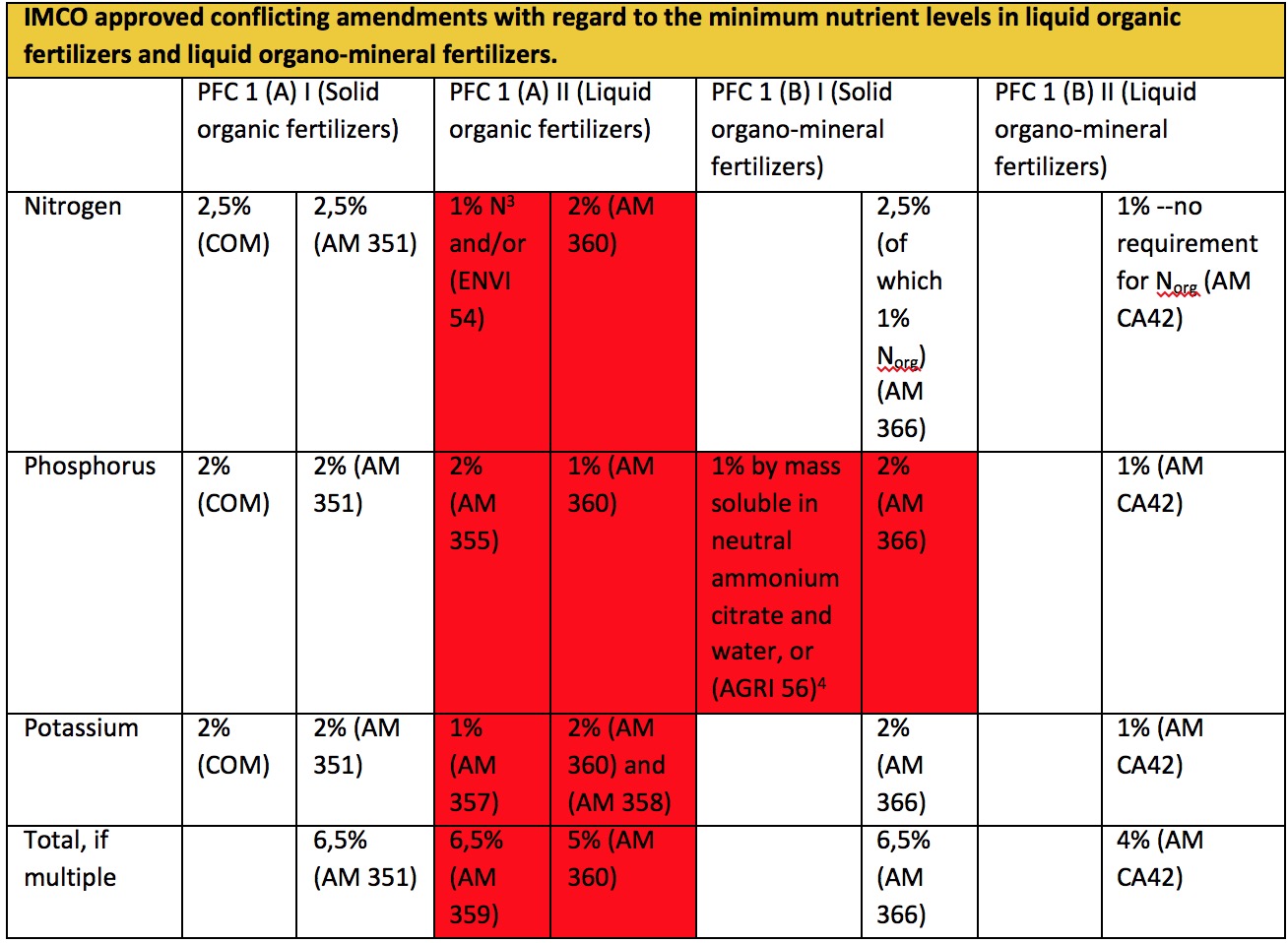26 July 2017
ECOFI HIGHLIGHTS POSITIVE ASPECTS OF IMCO VOTE,
CALLS ON MEMBER STATES TO ADDRESS TECHNICAL WEAKNESSES
Regarding the proposal for a regulation[1] of the European Parliament and European Council laying down rules on the making available on the market of CE marked fertilising products and amending Regulations (EC) No 1069/2009 and EC No 1107/2009[2]
The vote of the European Parliament’s Internal Market and Consumer Affairs Committee (IMCO) on Thursday, 13 July, was an important step was the creation of a single market for organic fertilizers, organo-mineral fertilizers and organic soil amendments. We support most of the amendments approved by IMCO.
ECOFI welcomes the inclusion of key raw materials for the industry in future CE-marked plant nutrition products and calls on Member States to:
- Agree to the amendments enlarging CMC 2 to include any plant-based material or substance that doesn’t require REACH registration;
- Follow IMCO’s lead in granting endpoint status to the materials derived from animal by-products that are already widely used at national level and those that are already approved for use in fertilizers at EU level.
With regard to more technical aspects of the regulation, we call on Member States to work with industry to correct a number of technical points, including where concepts for mineral fertilizers have been inappropriately applied to organic-based products:
- Because they were voted on a line-by-line basis and not en bloc, MEPs adopted incoherent minimum nutrient content across solid and liquid organic fertilizers and organo-mineral fertilizers (see table on next page);
- Several of the definitions of “total” nutrients that cite only inorganic (mineral) forms, whereas the point of organic-based products is to provide organic forms of nutrients that are gradually made available to plants by natural processes in the soil;
- Similar, MEPs approved labelling requirements that would limit the declaration to only mineral forms of nutrients, which is inappropriate for organic and organo-mineral fertilizers;
- Requirements for the “average” nutrient content to be listed are impossible to verify from a market surveillance perspective because market surveillance officers checking products in the distribution chain cannot know what the average is;
- Instead of “average” content, tolerances (i.e. the allowable margin of error) should be generous enough for organic-based products to take into account the natural variabilities of nutrient content in raw materials and the naturally occurring deterioration of the organic fraction of the product during distribution and storage;
- Given the relatively low concentrations of primary nutrients in mineral fertilizers, it is not congruent to have significantly different tolerances for primary, secondary and micronutrients as they will all occur in relatively low quantities, compared to mineral fertilizers where primary nutrients are generally present at much higher concentrations.
We call on Member States to incentivize the development of high-performance products by protecting competitive advantages.
- An IMCO amendment modified the Commission’s proposal to require all ingredients present above 1% to be listed on the label and the % dry matter to be indicated for each. We support full disclosure to Notified Bodies during conformity assessment and national authorities during market surveillance. However, requiring all of these details on the label would reduce clarity for farmers (too much information kills the information) at the same time that it would mean basically handing the product formulation over to competitors who might want to copy it.

[1] 2016/0084(COD)
[2] Regulation (EC) No 1107/2009 of the European Parliament and of the Council concerning the placing of plant protection products on the market
[3] AM ENVI 53 adopted by IMCO says a PFC 1 (A) (II) product should contain at least one of N, P, or K (which implies it may have more than one).
[4] The forms listed here are only mineral forms and do not include all the organic forms that are also possible in an organo-mineral fertilizer.



